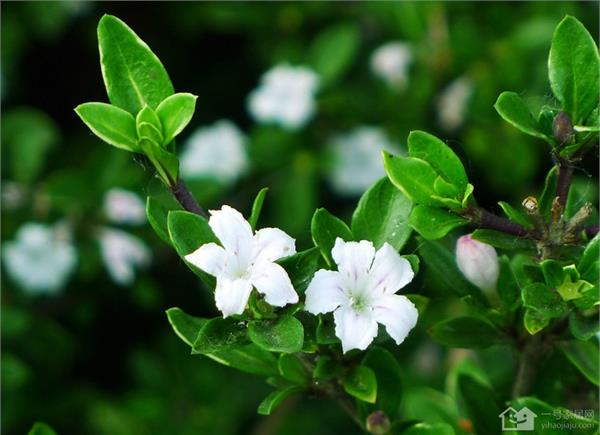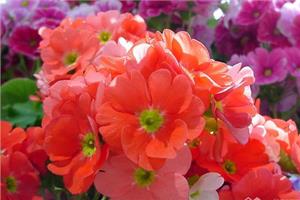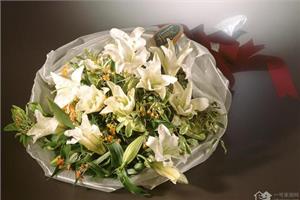The cultivation method of June snow maintenance and management of June snow bonsai
June snow is a very beautiful flower variety, which has been widely concerned by people, so what are the breeding methods for June snow? I believe everyone would like to know the answer to this question. Next, let's take a look at the cultivation methods of June snow. Through the study of the knowledge of June snow, we can better apply it to our daily life. Then let's take a look at the cultivation methods of June snow.

Maintenance and management of snow bonsai in June
1. Maintenance and management
Place: June snow should be placed in half-yin and half-yang, warm and humid place. Do not expose yourself to the sun in summer and put it indoors in winter at a temperature of not less than 2 ℃. The snow pile scenery beautifies the room in June, which can give people a fresh and comfortable feeling.
Watering: it is necessary to keep sufficient moisture in the basin soil during the growing period of spring and summer, and watering foliar water in the morning and evening at high temperature in summer is conducive to flowering. In the dormant period after autumn, we should pay attention to prevent the accumulation of water in the basin soil, so as not to cause rotting roots.
Fertilization: June snow is more tolerant of thin and barren, fertilization should not be too frequent, otherwise it is easy to cause crazy growth and affect the tree shape. In general, thin fertilizer can be applied once in spring and autumn.
Pruning: plastic pruning can be carried out in April and October each year. The branches that grow too strongly and the tiller branches that sprout from the roots can be pruned to achieve a balance of growth among the branches and to maintain the beauty of the tree. At the same time, branches that are too dense should be thinned. The pruning in October should not be too heavy to prevent autumn from sprouting again. In addition, heart-picking is often carried out in summer, which can make the branches and leaves flourish.
Turn the basin: the snow bonsai in June should be turned every 2-3 years, mostly in March in spring. When turning the basin, pay attention to cut off the withered roots, properly remove part of the old roots and old soil, and replace them with loose rotten leaf soil, which is beneficial to the development of the root system. In addition, the combination of turning the basin can gradually carry out the processing of root lifting and root exposure. After turning the basin, it should be temporarily placed in a cool and ventilated place and resume normal management after a week.
Pest control: the snow in June is occasionally damaged by aphids, which can be sprayed with 1200 times of dichlorvos.
2. Watch
June snow tree shape is delicate, branches and leaves are sparse, blossoming in midsummer, Fanying is as white as snow, the most suitable for viewing. June snow can also be made into miniature bonsai, flood and drought bonsai, is a good product for indoor greening, placed windowsill, several cases, appears to be very elegant.
The culture method of June snow
Brief introduction
June snow is by far the most popular bonsai tree sold in Europe and the United States. It makes a beautiful bonsai with very small dark green leaves, beautiful textured bark, trunks and even young trees. It can grow in woods and wet areas. The June snow earthworm is slightly larger than the June snow japonica rice. Some small oval leaves. The small white flowers that may erupt give it the nickname "Millennium Star" June Snow several times a year. In addition, it grows naturally on the tree trunk, giving them the ideal appearance age of the surface root, an interesting bark pattern.
Bonsai style:
Informal upright, tilt, semi-cascade, cascade, broom
Location:
Indoor
Location:
A bright, but not the sun shining? The permanent status of the cold wind, such as in the east or west windowsill. Good humidity levels must be maintained and daily spray and humidity trays can be provided. Do not place trees in the dry air above the windowsill radiator from these plants that significantly reduce the humidity around. In summer, when the night temperature is higher than 7 °C, June snow will benefit from several weeks of outdoor activities.
Lighting:
Snow in June can be planted indoors or outdoors. If you keep it outdoors, you must keep it sunny. If raised indoors, make sure it can be done well under fluorescent lighting, but keep it in a room where indirect light can be obtained from open windows and supplementary fluorescent lighting is often the most. If June snow doesn't get enough light, its growth may not be compact, so give it a good bonsai appearance if it has been used more and more indoors to make indoor plants. As mentioned earlier, June snow does not like to change. If it has been growing in a sunny area, do the appropriate stage first, such as slowly changing the environment, and then move it indoors. In addition, make sure that the amount of light you receive in the indoor location. If you are using a plant growth lamp, it may need to stay for 12 hours a day. If the tree moves indoors to the outdoor area, also slowly change the environment, and then move it to a very sunny place.
Watering:
June snow hates stagnant roots just because they don't like dry soil. Clear water thoroughly to ensure that the composting medium is well drained before watering. Daily watering should not be carried out as a routine unless it is necessary, although daily spraying is required. There is no need for spray when blooming, because it can lead to rotten flowers. Make sure to keep the gravel plate wet continuously, but never allow soaking in water.
How to cultivate and fertilize snow in June:
In winter, the fortnightly growth is fertilized once / a month from early summer. Using liquid bonsai food or semi-intense plant food. When applying fertilizer, the compost is moist to avoid root tip burns. Fertilization likes slightly acidic soil conditions. Stop fertilizing when June snow has lost its leaves, or if it doesn't show new growth points.
Pruning leaves and branches:
We need snow in June. June snow is a fast grower and often needs radical or repeated pruning to keep its shape. Since June snow trees will grow so heavily pruned, they can be done during childbearing if necessary.
Sealing and growing:
Snow in June doesn't like to lose its roots, so it can stay for 2-3 years. Move the basin during spring growth, which contributes to the rapid recovery of the root system.
June snow is a tenacious plant that needs to be protected from temperatures below 7 °C. it must be grown indoors. However, the problem is that it is difficult to maintain the required humidity level, causing the plant to suffer from leaves that may turn yellow and then fall off. Snow in June suffers from too much or too little water or it often loses its leaves when it is hot and dry. Although all these plants are not easy to kill.
Matters needing attention in breeding snow in June
1. Water and fertilizer management: the growing season of snow in June should be often watered to keep the basin soil moist, not too dry or too wet for a long time, avoid stagnant water in the basin or loss of water in the basin soil, spray water to the leaves 1-2 times a day in summer, and appropriately reduce watering times in winter. Keep the basin soil moist and slightly dry. 0.5% phosphate and potassium fertilizer solution is applied 2-3 times a year from April to May, and thin organic fertilizer solution is applied 1-2 times in Ladong, which is not suitable for other seasons. Avoid applying thick fertilizer.
2. Light and temperature requirements: during the snow growing period in June, it is appropriate to keep it in a sunny, warm, humid and well-ventilated place to maintain. In summer and early autumn, 50% of the sun should be shaded, 70% should be avoided, winter can be overwintered outdoors in the south, and the north should move indoors and keep room temperature at 5-12 ℃.
3. Pest control: there will be aphids and snails in the snow in June. Aphids can be sprayed with wind oil essence diluted 500,600 times, and snails can be sprayed with 58% wind and lightning excited EC 1500 times. Sometimes root rot occurs. At the beginning of the disease, the root and foliar spray of 12% oleic acid copper EC can be used to prevent and cure the disease. Spray (irrigation) once every 3-5 days, continuous spraying (irrigation) 3-4 times.
If you want to know more about it, you can continue to follow the No.1 Home Network.
To maintain the required level of humidity, causing the plant to suffer from leaves that may turn yellow, and then fall off. Snow in June suffers from too much or too little water or it often loses its leaves when it is hot and dry. Although all these plants are not easy to kill.
Matters needing attention in breeding snow in June
1. Water and fertilizer management: the growing season of snow in June should be often watered to keep the basin soil moist, not too dry or too wet for a long time, avoid stagnant water in the basin or loss of water in the basin soil, spray water to the leaves 1-2 times a day in summer, and appropriately reduce watering times in winter. Keep the basin soil moist and slightly dry. 0.5% phosphate and potassium fertilizer solution is applied 2-3 times a year from April to May, and thin organic fertilizer solution is applied 1-2 times in Ladong, which is not suitable for other seasons. Avoid applying thick fertilizer.
2. Light and temperature requirements: during the snow growing period in June, it is appropriate to keep it in a sunny, warm, humid and well-ventilated place to maintain. In summer and early autumn, 50% of the sun should be shaded, 70% should be avoided, winter can be overwintered outdoors in the south, and the north should move indoors and keep room temperature at 5-12 ℃.
3. Pest control: there will be aphids and snails in the snow in June. Aphids can be sprayed with wind oil essence diluted 500,600 times, and snails can be sprayed with 58% wind and lightning excited EC 1500 times. Sometimes root rot occurs. At the beginning of the disease, the root and foliar spray of 12% oleic acid copper EC can be used to prevent and cure the disease. Spray (irrigation) once every 3-5 days, continuous spraying (irrigation) 3-4 times.
If you want to know more about it, you can continue to follow the No.1 Home Network.
Related
- Wuhan Hospital Iron Tree Blooming Result Was Instantly Frightened by the Gardener Master
- Which variety of camellia is the most fragrant and best? Which one do you like best?
- What is the small blue coat, the breeding methods and matters needing attention of the succulent plant
- Dormancy time and maintenance management of succulent plants during dormancy
- Minas succulent how to raise, Minas succulent plant pictures
- What are the varieties of winter succulent plants
- How to raise succulent plants in twelve rolls? let's take a look at some experience of breeding twelve rolls.
- Attention should be paid to water control for succulent plants during dormant period (winter and summer)
- Watering experience of twelve rolls of succulent plants
- Techniques for fertilizing succulent plants. An article will let you know how to fertilize succulent plants.



